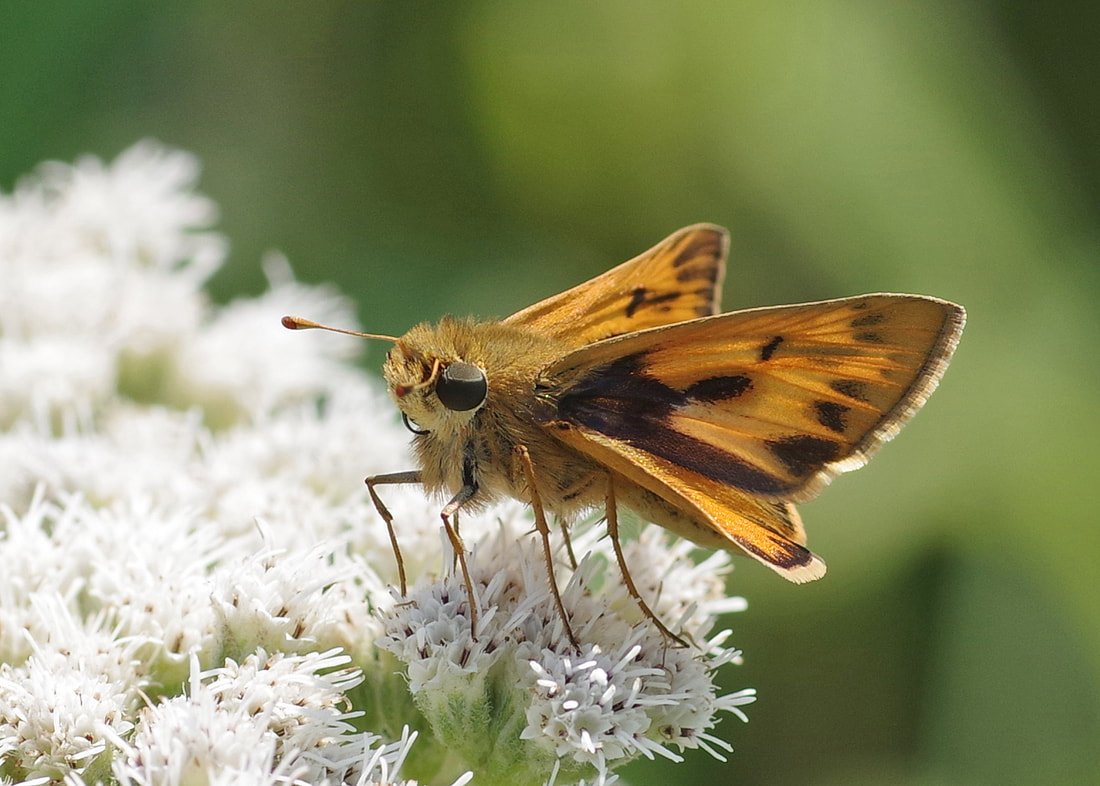Grass skippers are a distinctive presence in the garden and are easily identified at rest. With their hind wings held flat on the surface and the forewings held at a 45 degree angle, their silhouette resembles a tiny fighter jet! Skippers lay their eggs on grasses and sedges, and the caterpillars roll the edges of the leaves to make a shelter, sealing the edges with silk. There the caterpillars will spend the winter. The fiery skipper (pictured) is especially fond of Bermuda grass and crabgrass.
If you give your grass a ‘crewcut’ late in the season, you could be chopping up next year’s skippers. Leaving it longer is better for your turf, too--grass that’s cut very short in the late fall or early spring allows weeds to get a head start. If the lawn really needs cutting, consider setting your mower to its highest blade height (at least six inches). That way, the blades will pass over the top of the growing caterpillars, and you’ll also give your turfgrass a fighting chance come spring.
Ornamental grasses (such as fountain grass or muhly grass) should be left standing through the winter. In addition to providing shelter for many creatures, they provide interest in the winter landscape. They can be cut back in the spring, when the first green shoots of new growth begin to appear.
Author: Lisa Schneider
Photo courtesy of Riveredge Nature Center


 RSS Feed
RSS Feed